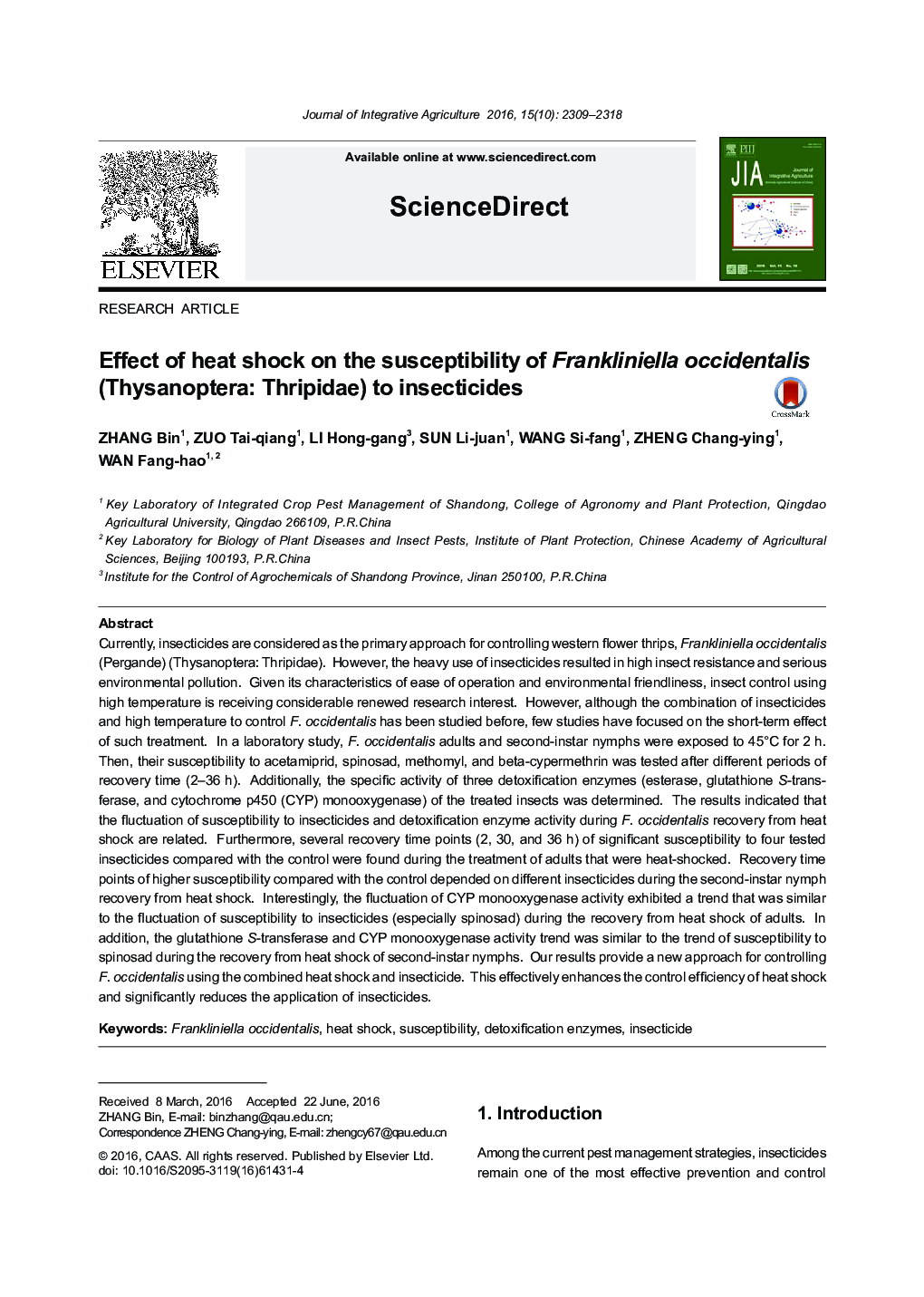| کد مقاله | کد نشریه | سال انتشار | مقاله انگلیسی | نسخه تمام متن |
|---|---|---|---|---|
| 4494063 | 1623716 | 2016 | 10 صفحه PDF | دانلود رایگان |

Currently, insecticides are considered as the primary approach for controlling western flower thrips, Frankliniella occidentalis (Pergande) (Thysanoptera: Thripidae). However, the heavy use of insecticides resulted in high insect resistance and serious environmental pollution. Given its characteristics of ease of operation and environmental friendliness, insect control using high temperature is receiving considerable renewed research interest. However, although the combination of insecticides and high temperature to control F. occidentalis has been studied before, few studies have focused on the short-term effect of such treatment. In a laboratory study, F. occidentalis adults and second-instar nymphs were exposed to 45°C for 2 h. Then, their susceptibility to acetamiprid, spinosad, methomyl, and beta-cypermethrin was tested after different periods of recovery time (2–36 h). Additionally, the specific activity of three detoxification enzymes (esterase, glutathione S-transferase, and cytochrome p450 (CYP) monooxygenase) of the treated insects was determined. The results indicated that the fluctuation of susceptibility to insecticides and detoxification enzyme activity during F. occidentalis recovery from heat shock are related. Furthermore, several recovery time points (2, 30, and 36 h) of significant susceptibility to four tested insecticides compared with the control were found during the treatment of adults that were heat-shocked. Recovery time points of higher susceptibility compared with the control depended on different insecticides during the second-instar nymph recovery from heat shock. Interestingly, the fluctuation of CYP monooxygenase activity exhibited a trend that was similar to the fluctuation of susceptibility to insecticides (especially spinosad) during the recovery from heat shock of adults. In addition, the glutathione S-transferase and CYP monooxygenase activity trend was similar to the trend of susceptibility to spinosad during the recovery from heat shock of second-instar nymphs. Our results provide a new approach for controlling F. occidentalis using the combined heat shock and insecticide. This effectively enhances the control efficiency of heat shock and significantly reduces the application of insecticides.
Journal: Journal of Integrative Agriculture - Volume 15, Issue 10, October 2016, Pages 2309–2318